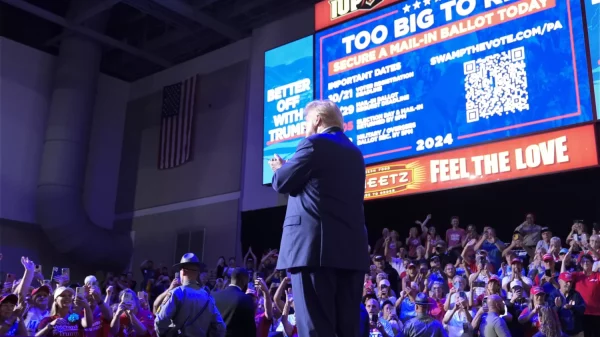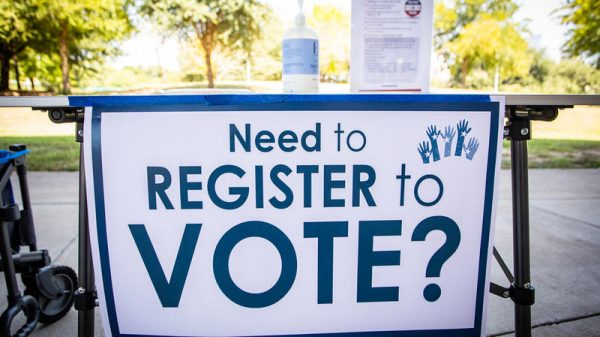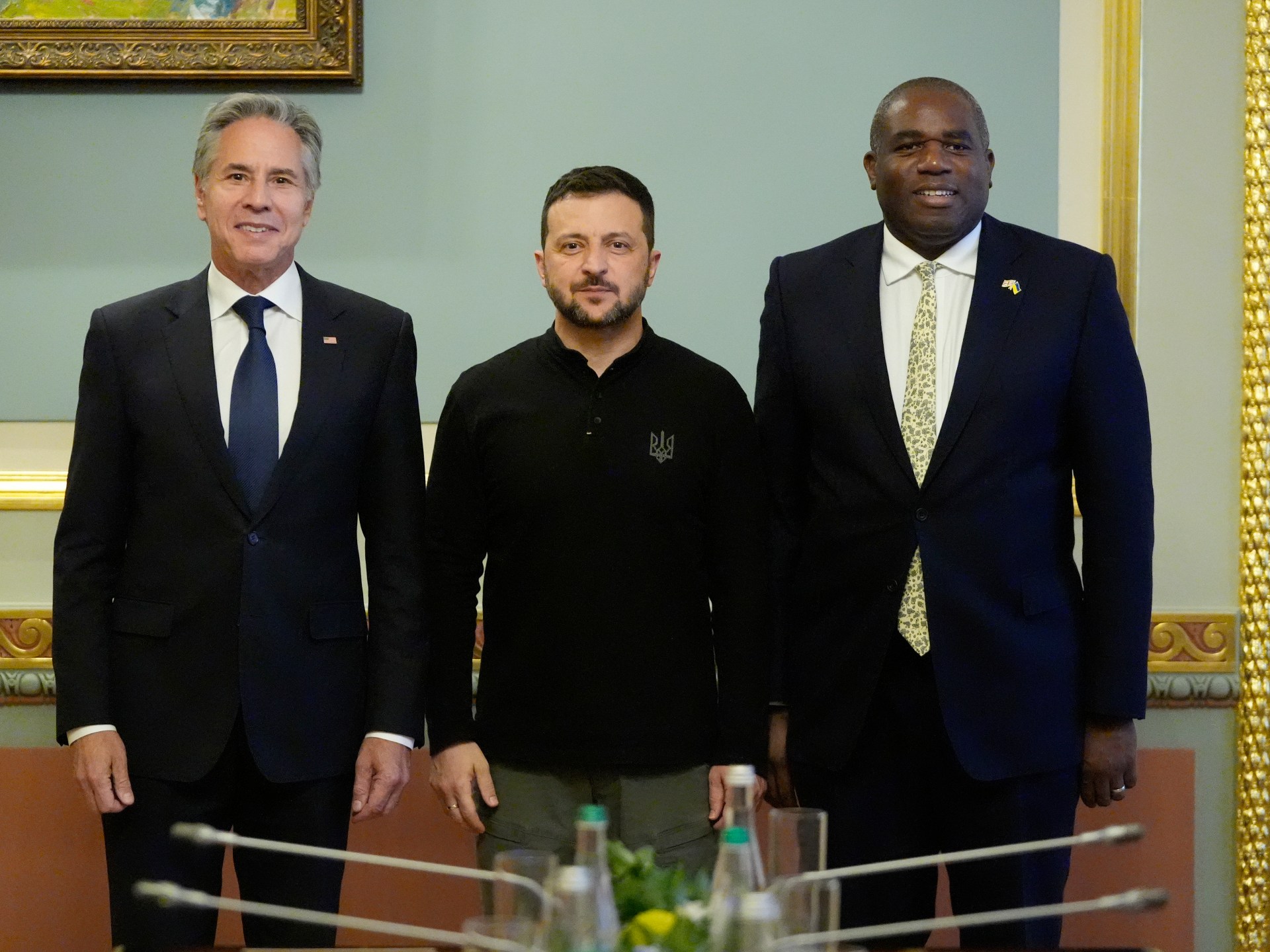The United States and United Kingdom have both agreed to review Ukraine’s request to lift restrictions on the use of their long-range missiles, including Storm Shadow missiles, in Russian territory.
But the growing indications from the West that it may approve Ukraine’s desire to use these weapons deep inside Russian territory have also sparked a terse response – and threat – from Russian President Vladimir Putin.
Here’s what we know about these long-range weapons and why they’re at the heart of the latest escalation in rhetoric during Russia’s war on Ukraine.
What are Storm Shadow missiles?
The Storm Shadow is a long range, air-launched cruise missile. This means missiles are launched from military aircraft in the air rather than from the ground. They can hit targets up to 250km (155 miles) away.
Used from Ukraine’s airspace, they could strike deep into Russian territory. If restrictions on the use of Storm Shadow missiles – provided by the UK but developed and manufactured using US components – are lifted, Russian targets in locations such as Kursk, Millerovo and Rostov could be easier to strike.
The Storm Shadow was developed by a Franco-British collaboration. They are manufactured by a joint venture which includes Italy.
Each missile costs $1m and they are capable of damaging or destroying Russian military infrastructure, including weapon storage sites and bunkers.
They could also intercept and lessen the impact of Russia’s military attacks on Ukraine’s civilian infrastructure, Keir Giles, a senior consulting fellow of the Russia and Eurasia Programme at the London-based Chatham House think tank said.
The UK confirmed that it had sent Storm Shadow missiles to Ukraine in May 2023. However, they were provided to Kyiv with the condition that Ukraine make use of long-range missiles within its own borders only and not fire them into Russian territory.

What is Zelenskyy asking for?
For months, Zelenskyy has repeatedly asked his allies to allow the use of long-range missiles to hit targets inside Russia.
At a Ukraine Defense Contact Group (UDCG) meeting of representatives of EU and NATO countries on September 6, he said: “We need to have this long-range capability, not only on the divided territory of Ukraine, but also on the Russian territory, so that Russia is motivated to seek peace.”
In July, Zelenskyy asked newly elected British Prime Minister Keir Starmer for clarification on Kyiv’s ability to use the Storm Shadow.
Would long-range rockets make a big difference for Ukraine?
Long-range missiles could provide Ukraine with new tactical capabilities such as the ability to strike distant targets. While they could give Ukraine an edge, they would not necessarily be enough to defeat Russia, experts say.
“We shouldn’t think of any individual weapon system as a wonder weapon that will change the war radically,” said Giles.
What is the position of the US, UK?
The US and UK have so far not allowed Ukraine to use long-range missiles for targets within Russia. Experts say this is out of fear of causing a regional escalation of the war.
In August, White House National Security Communications Advisor John Kirby told a press briefing that the idea that the West and NATO are at war with Russia is “a funny bit of Putin propaganda”.
US Secretary of State Antony Blinken and his UK counterpart, Foreign Secretary David Lammy, jointly visited Kyiv on Wednesday and pledged a combined $1.5bn in additional economic aid to Ukraine.
Zelenskyy asked for the lifting of restrictions and, on Wednesday, posted on X thanking the leaders for visiting him. “It is important that Ukrainian arguments are heard. This includes the long-range weapons,” he wrote.
A very substantive and long conversation with U.S. Secretary of State Antony Blinken @SecBlinken and UK Foreign Secretary @DavidLammy, during which we discussed all key issues.
It is important that Ukrainian arguments are heard. This includes the long-range weapons, the supply… pic.twitter.com/uZWIUVQo95
— Volodymyr Zelenskyy / Володимир Зеленський (@ZelenskyyUa) September 11, 2024
At the meeting in Kyiv, Blinken said Washington would review this request “with urgency” – most likely on Friday in Washington when US President Joe Biden meets with Starmer.
“We have adjusted and adapted as needs changed, as the battlefield has changed, and I have no doubt that we’ll continue to do that,” Blinken added.
This comes after Western countries alleged that Iran has supplied short-range missiles to Russia. Tehran denies this.
What does Russia say?
Russian President Vladimir Putin said on Thursday that if Western countries authorise Ukraine’s use of long-range missiles in Russian territory, they will become directly involved in the war.
“It will mean nothing less than the direct involvement of NATO countries, the United States and European countries in the war in Ukraine. This will be their direct participation, and this, of course, will significantly change the very essence, the very nature of the conflict,” he told Russian state media.
Based on these new threats, Russia will be forced to take “appropriate actions”, Putin said.
While he did not elaborate on what these measures would be, this raises the prospect of escalation, experts say. Earlier this month, Russia announced it is amending its nuclear doctrine. Further details of what changes Russia, the world’s largest nuclear power, would make were not revealed.
How could Russia respond?
Putin’s threats have raised fears the war could escalate within or outside Ukraine, experts say.
“A normal and standard Russian response to any development it dislikes is to intensify its terror attacks on Ukraine,” Giles said.
Putin has not elaborated on what he means by “appropriate actions”.
However, armed conflict or even a nuclear attack are not the only actions Russia could take to deter Ukraine’s Western allies, Giles said. He said Russia could step up sabotage campaigns across Europe and fund Western “terror” groups – often viewed as “Russian-backed proxies” – which engage in arson attacks, physical attacks and intimidation.
Russia could launch attacks on personnel of Western governments stationed in places outside Europe, such as the Middle East or the Far East, he said.
Additionally, Putin could expel more Western diplomats beyond the six British diplomats it accused of spying on Friday.
What will happen next?
“The US fear of escalation and reluctance to take steps to deter Russia, allows Russia and its coalition partners to escalate at will,” said Giles.
“If you show Russia you are strong and determined, Russia will not escalate,” Samantha de Bendern, an associate fellow also based in the Russia and Eurasia Programme at Chatham House, added. “This doesn’t mean escalation is impossible.”
She added that Putin has been threatening escalation as a result of Western involvement since February 2022, when the war began. The “red line” of what is off limits for Western allies is drawn and redrawn, she explained.
“The West has armed Ukraine piecemeal, only providing it with enough weapons to keep it going and not enough to help Ukraine liberate its territory,” she said.
“The West needs to understand where the real red line is, and it’s not giving more weapons to Ukraine.”




![Tyson Foods Plant [Photo: Food Manufacturing]](https://southarkansassun.com/wp-content/uploads/2023/08/iStock_1185520857__1_.5e441daa51cca-600x337.jpg)








![Silverado Senior Living Management Inc. [Photo: Los Angeles Times]](https://southarkansassun.com/wp-content/uploads/2023/10/download-6-4-600x337.jpg)

![China's Wuhan Institute of Virology [Photo: Nature]](https://southarkansassun.com/wp-content/uploads/2023/09/d41586-021-01529-3_19239608-600x337.jpg)















